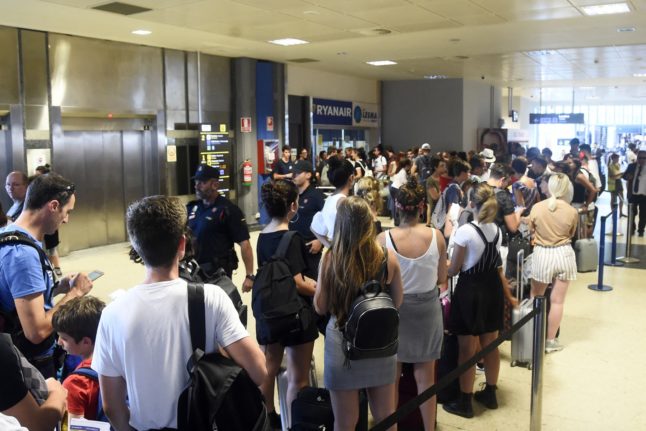Valencia’s Manises airport is set for a strike over the Easter holidays in Spain, from Maundy Thursday (March 28th) until Easter Monday (April 1st).
Valencia airport workers belonging to Spain’s national airport operator Aena have called the stoppage to protest against the lack of staff members, their long working hours and lack of compensation for extra work hours as well as below-bar airport facilities such as canteen for workers open permanently during work hours.
The strikes are scheduled to take place between 11am and 1pm on each of those dates, during which striking employees will hold demonstrations in front of Terminal 1.
“All our complaints have been fruitless, we’ve been painted and have waited for action, but now that talks have stopped, it’s necessary for us to go one step further and recover what rightfully belongs to us,” reads the Aena workers’ strike manifesto.
“We’ve proposed a strike calendar, with enough time to resume negotiations in the hope of reaching an agreement and for our requests to be made a reality.”
If the strike does go ahead, reports suggest that several dozen flights could be cancelled, delayed or rescheduled.
On Thursday 28th, flights that could be affected by the stoppage include:
- Ryanair flights connecting Valencia with Rome, Milan Bologna, Breslavia and Sofia
- United and Lufthansa flights connecting Valencia with Frankfurt and Munich
- Easyjet and British Airways flights between Valencia and London
- Turkish Airlines flights between Valencia and Istanbul
- Air Europa flights between Valencia and Palma de Mallorca
- Swiss flights connecting Valencia to Zurich
- Volotea flights between Valencia and A Coruña
- Eurowings’ Valencia-Stuttgart flights
On Friday 29th, flights that could be cancelled are:
- Ryanair flights connecting Valencia to Milan, Treviso, Trieste, Dublin, Marrakech and Palma de Mallorca
- SAP and Tap Portugal flights between Valencia and Lisbon
There is no further information yet about which flights will be affected on Saturday 30th, Sunday 31st and Monday April 1st.




 Please whitelist us to continue reading.
Please whitelist us to continue reading.
Member comments